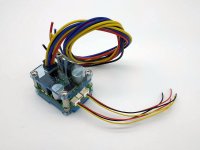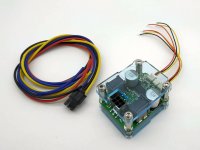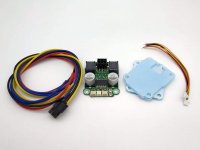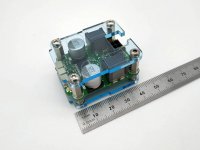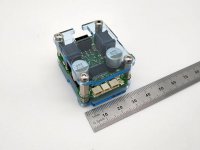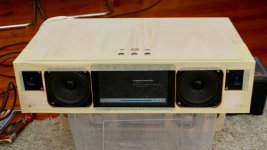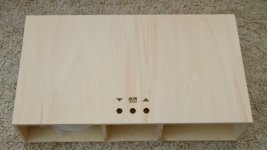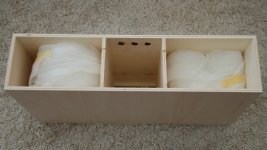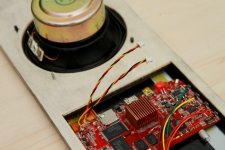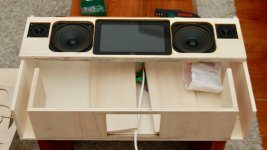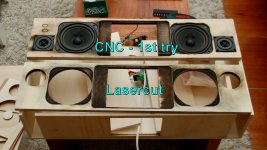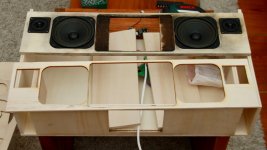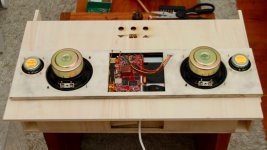For sale is a TPA3128D2 based stereo class-d amplifier.
The amps pcb measures only 40x35mm.
Specs are:
The amp is configured in 2xBTL with 26dB gain and 600kHz switching frequency. Due to the changed internals (compared to 3116/3118) it already works from 4.5V. Together with the new 1SPW+BD (Hybrid) modulation, quiscent current consumption is very low.
This amp is designed and all handmade in Germany with only quality parts sourced from Mouser including Susumu .5% resistors, United Chemi-Con organic polymer bulk caps, Murata/TDK automotive grade + soft term MLCC.
The amp is new, tested and burned in.
The inputs are ferrite bead filtered and dc-decoupled with Murata soft-therm X7R ceramics at 2.2uF to have low enough f-3dB at bass.
The amp comes with a cable harness both for in- and output. Power and output wires are approx 40cm in length with 0.5mm² (or 0.8mm) in diameter. Input wires are approc 7cm for connecting either differential or single-ended.
u.fl connectors are for external clock signals or syncing several devices.
Additionally there will be a custom made acrylic (Plexiglas) case consisting top/bottom plate, stainless steel screws and distance bolts.
Due to their soft saturation profile the inductors tend to warm up the sound a bit, mainly k2 which in result gives a pleasing signature to the music listened.
Price tag: 60€ + shipping
Worldwide shipping is possible.
Pictures:

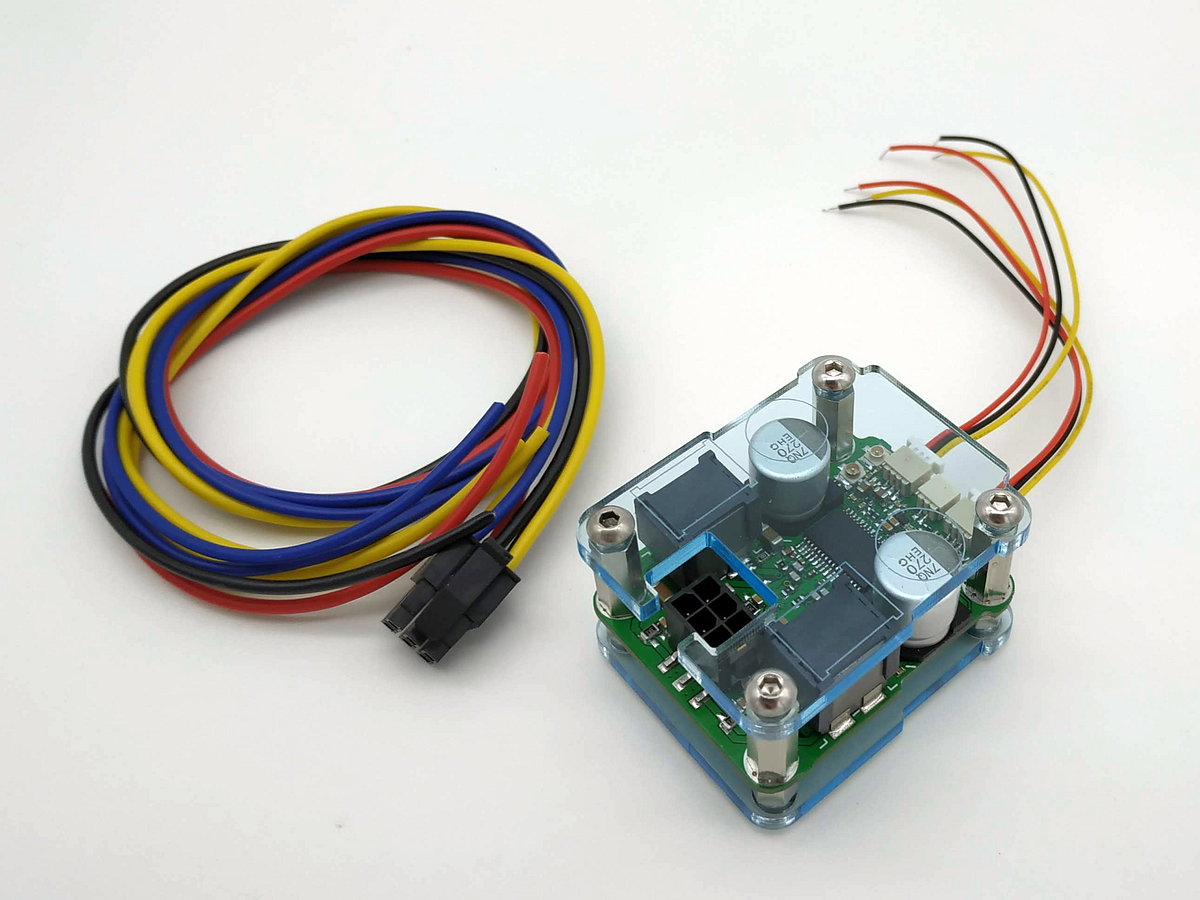

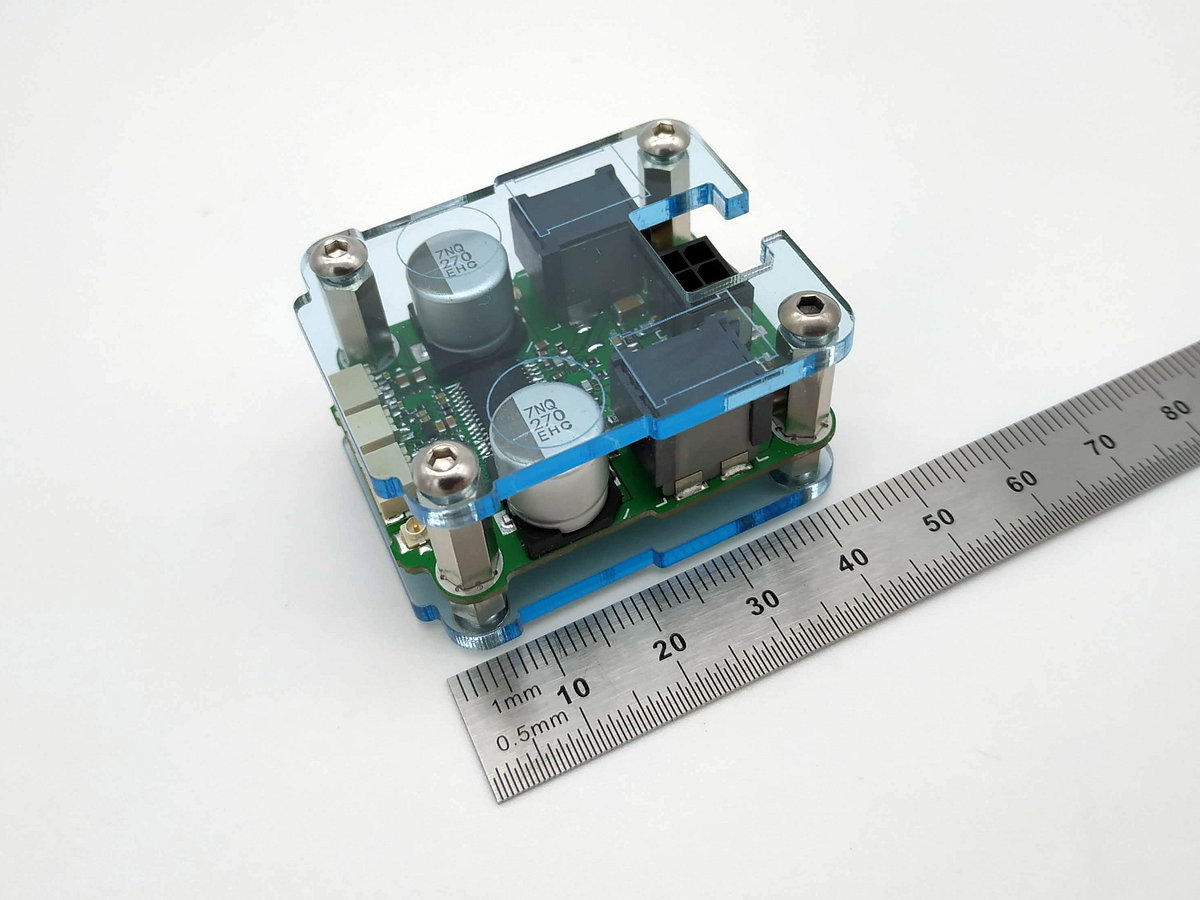

If there are any questions, please ask. 🙂
The amps pcb measures only 40x35mm.
Specs are:
- Differential analog inputs 2Vrms
- Efficiency 90% (4 ohms)
- 4.5-26V Supply voltage
- Gain: 20dB, 26dB, 32dB, 36dB
- 2 x 40W at 8 Ohm BTL (24V, 10% THD)
- 2 x 70W at 4 Ohm BTL (24V, 10% THD)
- 105W at 2 Ohm PBTL (22V, 10% THD)
- 2 x 35W at 8 Ohm BTL (24V, 1% THD)
- 2 x 57W at 4 Ohm BTL (24V, 1%THD)
- 90W at 2 Ohm PBTL (22V, 1%THD)
- Possible configuration: Stereo (2 x BTL), Mono (1xBTL), Mono (PBTL)
- 300-1200kHz switching frequency
- Adaptive Modulation (Hybrid Mode)
- 70dB PSRR, <65uV output noise, >102dB SNR
- BD or 1SPW Modulation
- Integrated LDO and 5V gate-drive supply
- HTSSOP32
The amp is configured in 2xBTL with 26dB gain and 600kHz switching frequency. Due to the changed internals (compared to 3116/3118) it already works from 4.5V. Together with the new 1SPW+BD (Hybrid) modulation, quiscent current consumption is very low.
This amp is designed and all handmade in Germany with only quality parts sourced from Mouser including Susumu .5% resistors, United Chemi-Con organic polymer bulk caps, Murata/TDK automotive grade + soft term MLCC.
The amp is new, tested and burned in.
The inputs are ferrite bead filtered and dc-decoupled with Murata soft-therm X7R ceramics at 2.2uF to have low enough f-3dB at bass.
The amp comes with a cable harness both for in- and output. Power and output wires are approx 40cm in length with 0.5mm² (or 0.8mm) in diameter. Input wires are approc 7cm for connecting either differential or single-ended.
u.fl connectors are for external clock signals or syncing several devices.
Additionally there will be a custom made acrylic (Plexiglas) case consisting top/bottom plate, stainless steel screws and distance bolts.
Due to their soft saturation profile the inductors tend to warm up the sound a bit, mainly k2 which in result gives a pleasing signature to the music listened.

Price tag: 60€ + shipping
Worldwide shipping is possible.
Pictures:
If there are any questions, please ask. 🙂
Attachments
Buffer is normally not needed but can be used (of course) together with a volume pot. I used these kind of TI chips with an unbuffered pot in the past with no problems but some people say it is better to use one. I never had issues. One of these boards is working in my webradio, where it gets feed in directly by the tablets audio out. (direct drive) Volume control is then done via software.
Pictures attached.
Pictures attached.
Attachments
Cutouts and frontpanel are done with the use of a lasercutter. The white panel is a laminated furniture back wall, the rest is made from carpenter plate. Speakers and xovers are salvaged from an old Bang&Olufson BeoVision TV set.
The whole panel is sandwiched from 3 pieces. The speakers frame (1), the speakers "hideout" aka bezel (2) and finally the white panel.
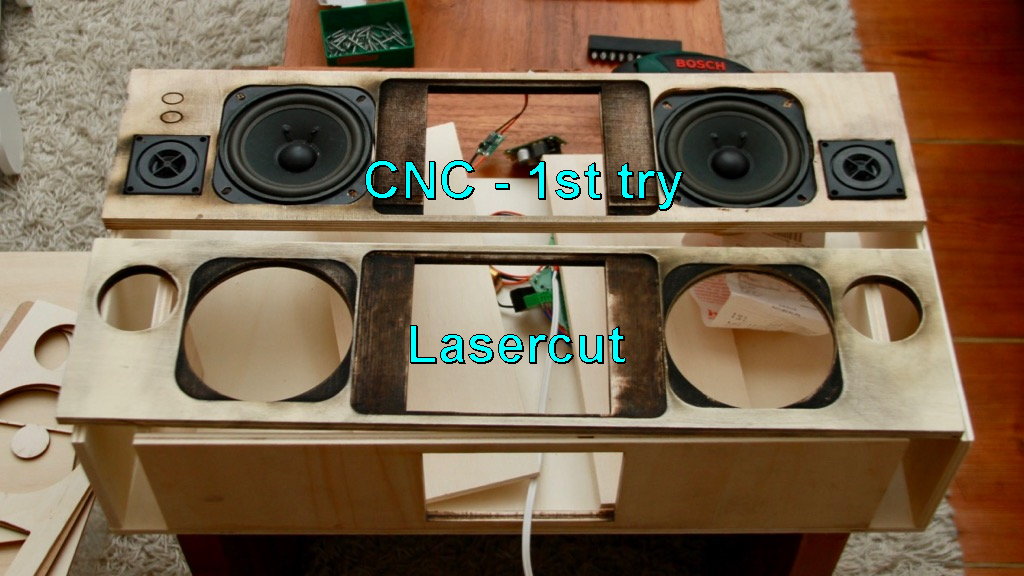
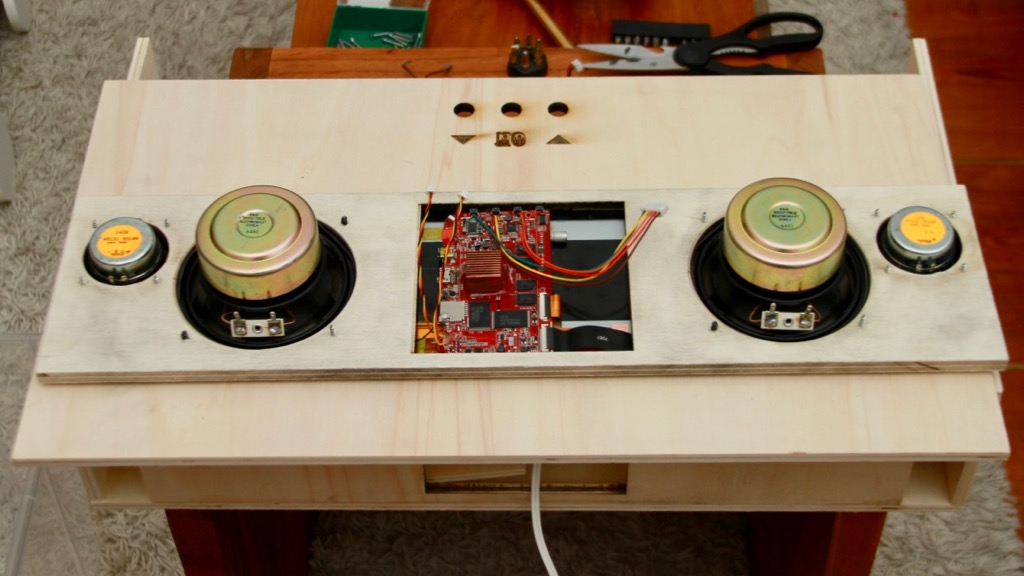
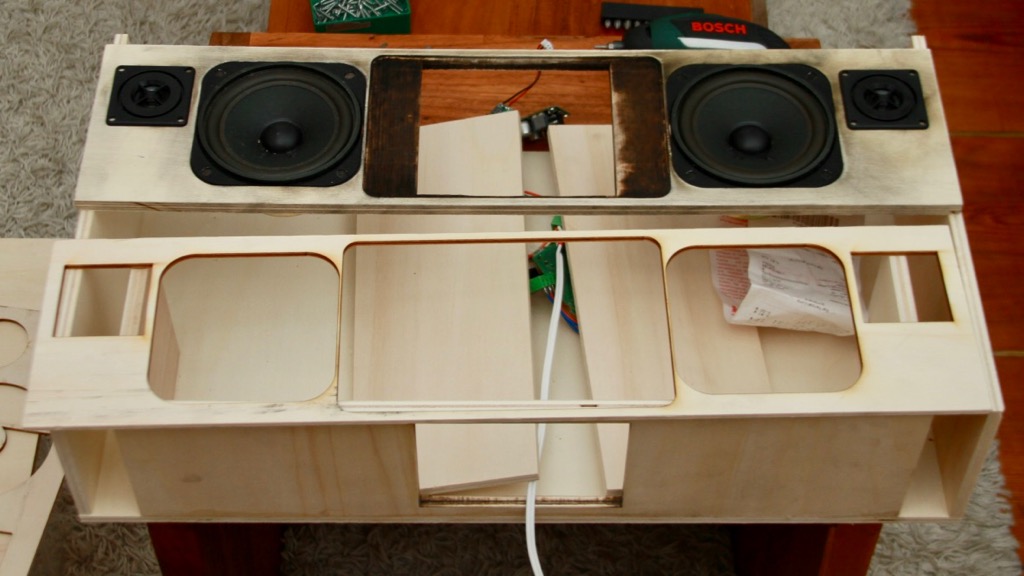
I adapted the BR geometry in volume (6 liters per side) and tuning to save the speakers signature. That's why the radio is so deep in size. Overall geometry is 53*13*30cm.
The white frontpanel is aligned with magnets to have them interchangeable.
The whole panel is sandwiched from 3 pieces. The speakers frame (1), the speakers "hideout" aka bezel (2) and finally the white panel.
I adapted the BR geometry in volume (6 liters per side) and tuning to save the speakers signature. That's why the radio is so deep in size. Overall geometry is 53*13*30cm.
The white frontpanel is aligned with magnets to have them interchangeable.
Attachments
Last edited:
Did i get it right that it's more than just one unit? I am strapped for cash right now, but am looking to build a compact amp quite soon so im interested...
It is one unit consisting of the amp pcb, the case (including bolts, screws two plates) and the cable harness.
- Status
- Not open for further replies.
